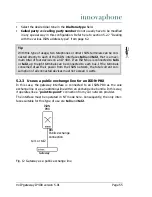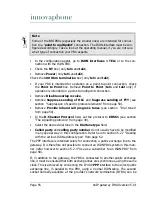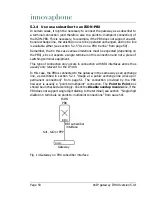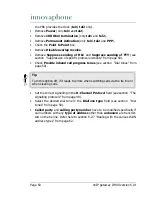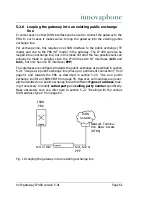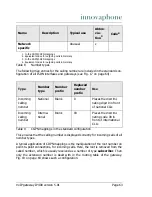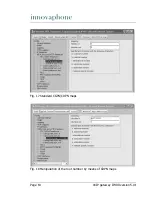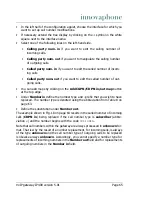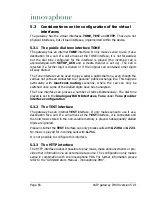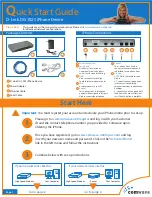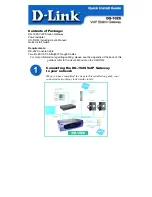
VoIP gateway IP400 version 5.01
Page 51
For incoming calls at the ISDN interface, this is usually only done in the direction
of the calling party if the interface is in NT mode, not however if it is in TE mode.
In a few cases though, in particular when linking up PBXs via tie lines, it can be
useful to also generate these tones in TE mode. This can be done using the
Provide inband call progress tones
setting.
Generation of time stamps during the connection set-up
The ISDN network usually generates a time stamp in the
connect
message. This
is used by telephones or PBXs, for example, to set their own clock at the first con-
nection. The gateways usually pass on such time stamps, unchanged.
However, it may be desired to have the current system time of the gateway con-
sistently used as the time stamp in all
connect
messages. This can be done using
the
Generate connected time
setting. Here, the gateway should always have
the correct time. Since it does not have its own real-time clock, an NTP time server
should be configured for this purpose (see page 110). This setting usually only
makes sense in NT mode.
5.2.1 Usage at a public exchange line (dial-up or permanent
connection)
In this case, the gateway is connected to one of the ISDN-exchange lines from
your network provider. This type of usage is only possible for
tel1
,
tel2
and
PPP
.
Fig. 10 Gateway on an exchange line
This type of connection makes sense for a number of scenarios:
• Use of the gateway as a gateway for H.323 calls into the public, wired net-
work. This allows H.323 terminals to reach standard terminals in the fixed tel-
ephone network and vice versa.
ISDN
network
Network Termination
Basic Access (NTBA)
tel1, tel2, PPP,
PRI1, PRI2
or S/T
Public exchange
line
Gateway



















